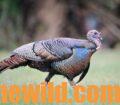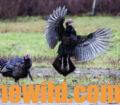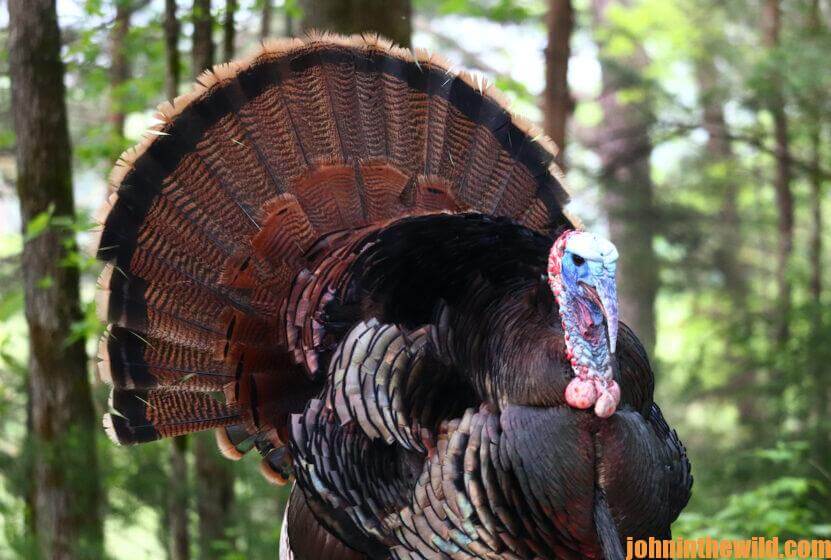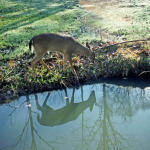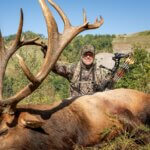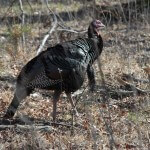Editor’s Note: Three secrets will help you to consistently take turkeys – location, location, location. Probably hunters bag 90 percent of their turkeys by sitting in places turkeys want to walk to anyway. Now before turkey season starts is the time to scout and identify where turkeys are. The big mistake many turkey hunters make when scouting is using hen calls to make turkeys gobble. To solve this problems, don’t take any calls with you when you’re scouting except locator calls like those of crows, owls, pileated woodpeckers and hawks and a coyote howler.
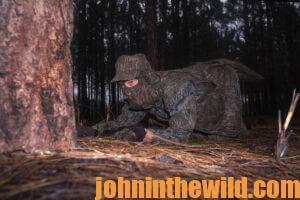 Bo Pitman has hunted turkeys all his life, primarily in Florida and Alabama, and has guided turkey hunters for more than two decades. The hunters who go into the woods with Pitman know they’re in for a day of springtime war with the gobblers. Although Pitman uses his calls very sparingly, each season at least 15 hunters will bag toms while hunting with Pitman, and another 15 hunters will have the opportunities to take birds.
Bo Pitman has hunted turkeys all his life, primarily in Florida and Alabama, and has guided turkey hunters for more than two decades. The hunters who go into the woods with Pitman know they’re in for a day of springtime war with the gobblers. Although Pitman uses his calls very sparingly, each season at least 15 hunters will bag toms while hunting with Pitman, and another 15 hunters will have the opportunities to take birds.
“When you hunt turkeys, the number-one rule is: don’t spook a turkey,” Pitman emphasizes. “If you hunt a turkey and he never knows he’s being hunted, you can hunt him again the next day. If you spook that gobbler, you may not be able to hunt him any more that season. If you stand-up, a turkey will spot you. If you’re hunched-over, you’ve cut in half the chances that the bird will see you. If you’re on your hands and knees, you’ve cut your chances of being spotted in half again. If you’re on your belly, you’ve cut the bird’s chances of seeing you even more.
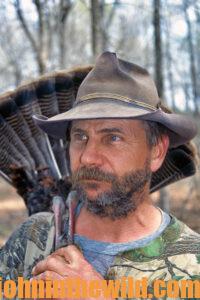 “I always take two pairs of gloves with me when I hunt turkeys – a pair of heavy cotton gloves, my ‘crawling gloves,’ and a pair of thin mesh gloves, my ‘sitting gloves.’ If you wear only mesh gloves or no gloves when you’re crawling through poison ivy, you’ll be in trouble. Most people think that when you’re crawling, you’re trying to crawl up to get a shot on the turkey but that rarely happens. Usually you’ll crawl to get into better position to sit-down and wait for the turkey to appear. The key to taking a gobbler is not your crawling ability, but your skill in getting to a place where a turkey wants to be. Often moving another 20 yards from where I’ve first started calling has made a difference in whether or not my client has taken a bird. Sometimes I’ll crawl-up to the edge of a field to see exactly where the turkey I’ve heard gobbling is standing. I always try to crawl right next to a fence post and then stay so close to the fence post that I look just like it. I’ve had turkeys spot me before, not know what I am and walk over to investigate. When a gobbler gets that close, he can see your eyes. So, I just lower my head, close my eyes, never look at the bird and wait for him to walk away. Generally I won’t spook him. I don’t set-out to get that close to turkeys, but sometimes it just happens.
“I always take two pairs of gloves with me when I hunt turkeys – a pair of heavy cotton gloves, my ‘crawling gloves,’ and a pair of thin mesh gloves, my ‘sitting gloves.’ If you wear only mesh gloves or no gloves when you’re crawling through poison ivy, you’ll be in trouble. Most people think that when you’re crawling, you’re trying to crawl up to get a shot on the turkey but that rarely happens. Usually you’ll crawl to get into better position to sit-down and wait for the turkey to appear. The key to taking a gobbler is not your crawling ability, but your skill in getting to a place where a turkey wants to be. Often moving another 20 yards from where I’ve first started calling has made a difference in whether or not my client has taken a bird. Sometimes I’ll crawl-up to the edge of a field to see exactly where the turkey I’ve heard gobbling is standing. I always try to crawl right next to a fence post and then stay so close to the fence post that I look just like it. I’ve had turkeys spot me before, not know what I am and walk over to investigate. When a gobbler gets that close, he can see your eyes. So, I just lower my head, close my eyes, never look at the bird and wait for him to walk away. Generally I won’t spook him. I don’t set-out to get that close to turkeys, but sometimes it just happens.
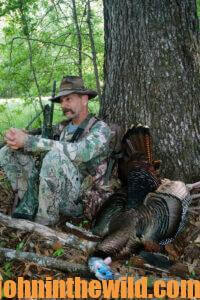
“I believe you can call one out of every five turkeys to you. To get those other four gobblers, you must earn them by spending hours figuring out where the birds want to go and often crawling there on your hands and knees and perhaps your belly. Never forget that you can’t stereotype turkeys. With some turkeys, you can get away with making some movement, but with others, you can’t. Also, a turkey’s attitude may change hourly. To consistently bag gobblers, you’ve got to pursue them and react to their mood changes. Because my hunters and I can hunt all day in Alabama, we may start-off with a turkey in the morning at daylight and at dark still be with that same turkey on a totally different section of land. Regardless of what anyone says, crawling is the tactic most hunters use to take turkeys. Most of the folks who don’t crawl on turkeys are just lazy hunters. Now in the South, you do have to be careful not to crawl up on a snake, because that encounter will make you back-up in a hurry.”
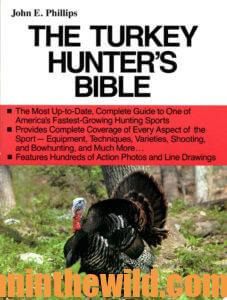 To learn more about hunting turkeys successfully, visit John E. Phillips’ Amazon book page at https://www.amazon.com/John-E.-Phillips/e/B001HP7K6O. For even more information from many of the top turkey hunters and callers, go to the book, “Turkey Hunters’ Bible,” https://www.amazon.com/gp/product/B007HT1IUS/ref=dbs_a_def_rwt_hsch_vapi_taft_p2_i7
To learn more about hunting turkeys successfully, visit John E. Phillips’ Amazon book page at https://www.amazon.com/John-E.-Phillips/e/B001HP7K6O. For even more information from many of the top turkey hunters and callers, go to the book, “Turkey Hunters’ Bible,” https://www.amazon.com/gp/product/B007HT1IUS/ref=dbs_a_def_rwt_hsch_vapi_taft_p2_i7
available in Kindle, print and Audible. You may have to copy and paste this link into your browser. (When you click on the book, notice on the left where Amazon says you can read and hear 10% of the book for free). On the right side of the page and below the offer for a free Audible trial, you can click on Buy the Audible book.

